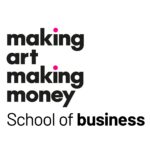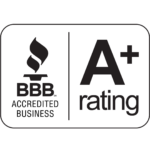What's The Purpose of Your Art?
What's The Purpose of Your Art?
(Transcription)
Artist, Brady Nields,
New York, USA
QUESTION: Why is Brady feeling stuck?
Ann Rea: So the reason why you’re having trouble going forward with your prototype project is because you haven’t, Once you know your why, and you’re really clear, you don’t ever forget it. Ever, ever, ever, ever. So as I’m talking to you, it’s kind of like It’s over here. I’m over here. I’m over here. I’m over here. There’s nothing that you’ve said that isn’t true or valuable. But I’m not
Brady Nields: Right.
Ann Rea: Convinced that it’s anchored in those six moments.
QUESTION: Why must an artist understand their “Why”?
Ann Rea: So we’re using a lot of references to pieces and parts of the program that Brady is enrolled in where artists first and foremost learn their why. Which is what is their creative purpose who they are, what they stand for, and what they stand against. Without knowing that, it’s really, and really owning it and just really owning it, putting a stake in the ground and saying that, this is my flag, I’m flying it.
QUESTION: Most people don’t really know themselves.
Ann Rea: Most people never know themselves in their whole lifetime. Ever. You’re only, what? You’re only 34.
Brady Nields: Around, I think. Yeah.
Ann Rea: You’re a lucky duck. Do you know how lucky you are? I mean really seriously most people are still wondering what is the purpose of my life? What am I here to do? Who am I what do I stand for? What do I stand against? So because they don’t really know, and they don’t really own it, they get easily influenced. They get easily discouraged. And they don’t really even know what they like and what they love, and they’re confused about it. But when you really start to own it and just say I’m not making any apologies. This is my life. This is what I’ve learned in my life. This is who I am based on my life experience. This is what I stand for. This is what I stand against. So make sure that you answer those questions. The overall lesson is what you stand for.
Brady Nields: Right.
Ann Rea: But it’s also good to counter that with and here’s what we, and here’s what I stand against.
QUESTION: What is an example of a “Why”?
Ann Rea: One of the things that I stand for are maintaining very clear, healthy, respectful boundaries. That’s very much part of my M.O. because of my life experience. So the opposite of that is blurry, unhealthy, disrespectful boundaries, right?
Brady Nields: Right.
Ann Rea: What’s that?
Brady Nields: Or lack thereof boundaries.
Ann Rea: Or complete lack of boundaries, right?
Brady Nields: Right.
Ann Rea: It causes all sorts of hell. It really does. So for me that’s very, very important. Like you know, whether it’s boundaries in relationships or even boundaries with myself. Like I’m not gonna eat a bunch of chocolate cake, you know. Pfft.I’m gonna give myself, I’m not gonna I’m gonna make sure I get enough sleep. Like that’s kinda how I’m oriented. And you’ll notice that the way that I handle the group right. I have really, we have really clear boundaries. There’s no posting your art. I don’t want to see it. This is not an art critique. Everybody has to be re– No one has to study with anyone they don’t want to, but everybody needs to be polite, professional, and kind. Or out you go.
Brady Nields: Yeah.
Ann Rea: And so anyway that’s just an example that I thought you might be able to relate to because you’ve seen it in action, right.
Brady Nields: Definitely. And I’ve benefited from it.
QUESTION: What can undermine your focus?
Ann Rea: The reason why you’re feeling a lack of focus is because they’re saying that the task takes as long as the time allotted, right?
Brady Nields: Alright.
Ann Rea: So if you never put a finish date on something
Brady Nields: It’ll take forever.
Ann Rea: infinite time is allotted.
QUESTION: How can I increase my confidence?
Ann Rea: In fact if you’re not feeling confident yet, Brady, fake it.
Brady Nields: I have, I have tried some of that here and there and no one knows any different, so.
Ann Rea: Of course they don’t.
QUESTION: How does having a clear goal make you feel?
Ann Rea: How do you feel now that you have a task and you know when you’re gonna get it done? How does that feel in terms of your focus and your confidence?
Brady Nields: It feels like I want to start on it right now.
Ann Rea: Good.
Brady Nields: Today.
Ann Rea: That’s what we want to feel.
Brady Nields: So that it could be done before then.
Ann Rea: Great.
Brady Nields: And then I’d feel more confident that it’s done ahead of time.
QUESTION: You will not succeed alone.
Ann Rea: We don’t succeed alone. You can’t succeed alone.
Brady Nields: You can’t.
Ann Rea: Yeah.
Brady Nields: You won’t succeed. It’s not like a “Oh I’ll do it by myself” You might as well just say, “Well, the hell with that. I’m just gonna paint for a hobby.”
QUESTION: Is your “Why” clearer?
Brady Nields: It was odd that you said the things we say under our own breath, aka upstairs, now that something that I love instead of just oh don’t do that don’t do this. It’s kind of like, fake it, haha, I’m faking it. And no one else knows, so it gives you confidence.
Ann Rea: If you have this sculpture that’s got this message, I mean it’d be really interesting to ask other people what messages they need to tell themselves. Like I know, like Leslie Cole, you know when she really, her big why is that you are deserving of love just the way you are.
Brady Nields: Right.
Ann Rea: Just the way you are. Like you are deserving of unconditional love just the way that you are. And that informs a lot of what she does, not just as an artist but also as a physician. And it’s really kind of had this positive ripple effect in her, into her whole life. But I like the idea of making something so bold and visible and physically taking up space. Because if you think about it all this nasty bullshit that we tell ourselves is taking up space in our head. So it really interest
Brady Nields: Right. Real nasty.
Ann Rea: To think about having something physically take up space in your home that’s telling you what you really need to be listening to, you really need to be telling yourself. It’s almost like a sculptural affirmation.
Brady Nields: Total poop.
Ann Rea: But not an affirmation that comes from Louise Hay but an affirmation that comes from the person’s heart.
Brady Nields: And that’s kinda how I thought of them before I made them. One of my study partners had mentioned it and I went from having the affirmation in my pocket and to think next time I say to myself, you know, “keep your thoughts to yourself, It’s easier that way.” I wrote that one one side and on the other side it said “Say what you just thought out loud.”
Ann Rea: Now I really like that because it’s the sculpt it’s two sides of a coin, right. A coin has sides
Brady Nields: They’re always going back and forth.
Ann Rea: You’ve got the positive, the negative message that is ringing in your head
Brady Nields: Right.
Ann Rea: And the positive message that you’re choosing to
Brady Nields: Right.
Ann Rea: focus on. So I mean that itself can lend itself to really simple, elegant sculptural form and I don’t know. There’s just something to be explored. I don’t wanna, I don’t want to get into the how just yet.
Brady Nields: Right.
Ann Rea: Because we still really lands clearly in the why.
QUESTION: Based on your “Why,” want is your mission?
Brady Nields: What I wanna do in that, I don’t know, help people communicate with themselves.
Ann Rea: So I think what’s really interesting about what you’ve talked about with the sculpture you made for yourself in communicating with yourself. I mean I think that’s a critical problem. That people don’t communicate with themselves. Like, they’re actually allowing takes to run in their head from, that are fragmented from conversations they’ve had or something they’ve read.
Brady Nields: Yes.
Ann Rea: Or something watched in a movie. Instead of being really deliberate about the messages that they tell themselves, that they focus on. Really we should be telling ourselves that we love ourselves and that we respect ourselves and that we care about ourselves, right?
Brady Nields: Right. Yeah.
Ann Rea: We should be telling ourselves that constantly. But you can hear people mutter under their breath “I’m fucked.” “I’m such an idiot.” “I’m such an asshole.” You know that’s actually what people are saying.
QUESTION: Should other artists apply?
Brady Nields: Come down and just do it. Like there’s– I’ve heard other people say they’ve tried other things. I haven’t tried anything else.
The only thing I tried was not selling anything and just working on my art ’cause it, I liked how it made me feel. But from hearing other students say, oh I spent you know $1000 at this place, and submission fee of 500 over here and wasted a year over there. I’m like, I guess I was one of the lucky ones that just put into Google hey how do I price my art. And then up popped Ann talking for an hour to four other people. And it’s like well maybe I need to start somewhere else. And that’s what led me to here. And there’s no amount of I would’ve been able to do it by myself. A because your knowledge isn’t there and B it sucks doing it by yourself. It’s actually impossible.

